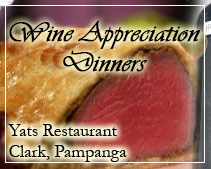Sweet wine for beginners
In typically Australian larrikin fashion, the custom of assigning nicknames to favoured friends has been extended to these wines which are affectionately known as ‚Äústickies‚ÄĚ: a reference that captures the luscious ‚Äústicky‚ÄĚ texture of these wines which slide like runny honey over the palate.
The majority of ‚Äústickies‚ÄĚ in Australia are made using another traditional technique that takes advantage of a naturally occurring fungus, botrytis cinerea. Commonly called ‚Äúnoble rot‚ÄĚ, botrytis attacks the grape gradually drawing the moisture from the berry, intensifying the sugar concentration, acidity and fruit flavour. The Riverina region of New South Wales, where warm damp autumns encourage the development of noble rot, is particularly well known for these wines.
‚ÄúStickies‚ÄĚ are intensely flavoured white wines, deep gold in colour with bouquets of dried apricots, rich sweet flavour and a sharp acid finish. Their intensity of flavour means they are often sold in half bottles and drunk to accompany or even replace desserts.
These botryised sweet wines contain a delicate, acidic balance that creates a sensational accompaniment to fruit desserts. They are also the perfect accompaniment to blue or soft cheeses.
. Muscat
. Reistling (reez-ling)
.Semillion ( semi-yon)
. sweet wine
Muscat
In Australia, as elsewhere, this variety’s greatest triumph is with its sweet wines.
Grown in the Rutherglen district of Victoria, fully ripened grapes are harvested, then are partially fermented and (traditionally) left to mature in barrels. The result? Heaven! Dessert wine of almost ambrosial concentration and never without a tingling tang of acidity to balance it.
The Muscats from north-east Victoria are truly one of Australia‚Äôs ‚Äúgifts‚ÄĚ to the word of wine.
Riesling (:reez-ling)
Unlike their European counterparts, Australian Rieslings are generally made in dry styles. The result is another international gem, which due to their crisp fruit and acid balance are a perfect food accompaniment.
Riesling also has an ability to mature with age as well as delight with its youthful freshness. Look out for examples from the Clare or Eden Valleys of South Australia which develop this grape’s classic honey and citrus characters.
There are more fine examples of Rieslings from Western Australia’s Great Southern region (great complexity), from Tasmania (crisp and perfumed) and the Barossa Valley (more rounded and full-flavoured).
Riesling is also responsible for some of Australia’s greatest sticky sweet dessert wines. They’re either made with a touch of that benevolent mould botrytis or harvested when all the berries have dried and shrivelled on the vines in late autumn. In either case, the perfumed rich intensity of these wines, still with their racy acidity, is little short of magnificent.
Semillon (:semi-yon)
Semillon is one of the very best grapes for demonstrating the different characters emerging from Australia’s varied wine regions.
Start with Semillon from the Barossa Valley to get a glimpse of this grape at its most luscious. Deep yellow in the glass, aromas of peaches and mangoes fill the nose and in the glass the flavours will continue the theme ‚Äď with added vanilla (Barossa Semillon is often wood-aged like Chardonnay).
Semillon from the Hunter Valley is another matter altogether. It’s a lean, rather pale-looking wine that seems to have little more than flintiness in its favour. Give it a few years in bottle, however, and as if from nowhere it turns into a honeyed, nutty, complex classic. Go west and Margaret River’s versions are a fine balance between these two styles, and they age well too. Find a Semillon from anywhere in Australian and you’ll almost certainly be able to distinguish it by its warm, peachy character, whether it be a simple regional blend, a sweet botrytised wine from the Riverina of New South Wales.
Sweet white wine
Australia‚Äôs ‚Äėsticky‚Äô wines fall into two groups:
- Late-harvest wines: Semillon, Riesling, Gewurztraminer and Sauvignon Blanc.
- Botrytis affected styles: these wines are affected by botrytis cinerea, a fungus which shrivels the grape and makes them sweet and juicy. Look out for Semillon and Riesling examples.
Source: http://www.wineaustralia.com/australia/Default.aspx?tabid=194
If this article about Clark is useful to you, please click here to contact us to tell us what more you wish to know about this article or Clark Philippines, which can be something about Clark investment, about Clark resorts, about Clark Swimming and Leisure or simply general news about Clark.
Please send questions to Editor@ClarkPhilippines.com. Leave your name, email address, contact numbers and we will get back to you as soon as possible. Information received will not be disclosed.













